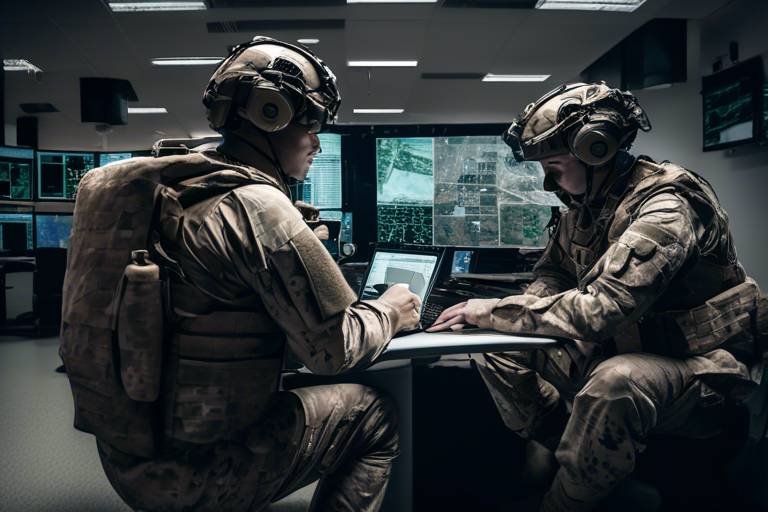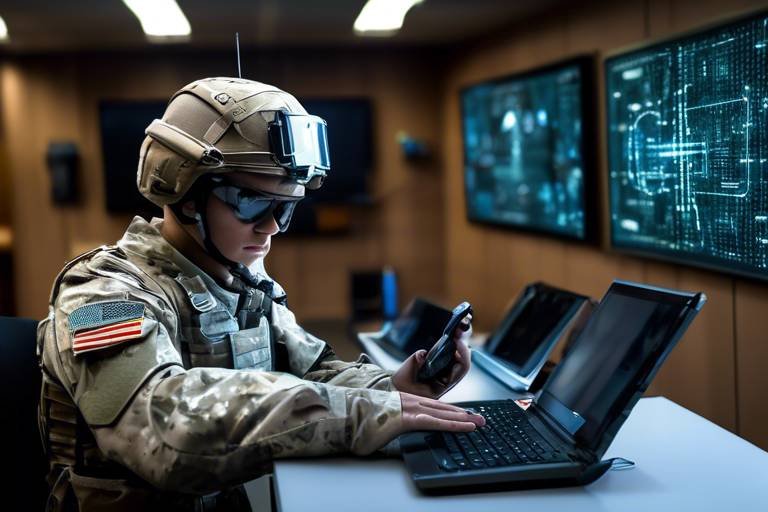The Importance of Continuous Learning in Military Training
In today's fast-paced world, the concept of continuous learning has gained significant traction, especially in the realm of military training. Imagine standing on a battlefield where the rules are constantly changing, and the stakes are life and death. This is the reality for military personnel, who must be equipped not just with weapons, but with a robust set of skills and knowledge that evolves alongside technology and tactics. Continuous learning is not merely an option; it is a necessity. It ensures that soldiers are not just reactive but proactive, ready to face diverse challenges head-on. By embracing a culture of ongoing education, military organizations can enhance their operational readiness and adaptability, making them more formidable on the battlefield.
The benefits of continuous learning extend far beyond the immediate need for knowledge acquisition. It plays a crucial role in personal development, fostering an environment where innovation can thrive. When military personnel engage in ongoing training, they are better prepared to adapt to unexpected situations, improving their decision-making skills. This proactive approach to learning creates a ripple effect, contributing to mission success and enhancing overall military effectiveness. As we delve deeper into this topic, we will explore various methodologies that facilitate continuous learning, the impact of technological advancements, and the future of military training.
Continuous learning enhances military effectiveness by improving skills, fostering innovation, and ensuring personnel are prepared for diverse challenges. This ongoing education contributes to mission success and personal development in several ways:
- Skill Enhancement: Regular training sessions and educational programs help personnel refine their existing skills and acquire new ones.
- Innovation: A culture of learning encourages creative problem-solving, allowing military units to devise innovative strategies in complex scenarios.
- Preparedness: Continuous education ensures that soldiers are ready for a range of challenges, from traditional warfare to modern asymmetric threats.
Moreover, the commitment to continuous learning cultivates a sense of resilience among military personnel. When faced with setbacks or unexpected challenges, those who have engaged in ongoing education are often better equipped to analyze the situation critically and develop effective solutions. This adaptability is crucial in an environment where the only constant is change.
Various training methodologies, including simulations, workshops, and online courses, are integral to continuous learning. Each of these approaches plays a unique role in enhancing military readiness and adaptability. For instance, simulation-based training provides realistic scenarios that sharpen decision-making skills. Imagine a soldier navigating a complex urban environment filled with potential threats; the ability to practice in a controlled setting allows them to hone their instincts and responses without the immediate risks of real combat.
Simulation-based training is a powerful tool that offers military personnel the opportunity to engage in lifelike scenarios. These simulations can replicate everything from tactical maneuvers to high-pressure decision-making processes. By immersing soldiers in realistic environments, they can practice their skills and learn to react effectively to various challenges. This method not only prepares them for the battlefield but also instills confidence in their abilities.
One of the most exciting developments in military training is the use of virtual reality (VR). VR technology provides immersive experiences that transport soldiers into virtual combat zones, allowing them to experience the sights and sounds of warfare without leaving the training facility. This innovative approach enhances learning outcomes by offering a safe space for experimentation and practice. Just as a pilot uses a flight simulator to master flying, soldiers can use VR to refine their skills in a highly engaging way.
Effective feedback mechanisms are crucial for continuous learning. Constructive feedback helps military personnel identify areas for improvement and refine their skills. In a training environment, feedback can come from instructors, peers, or even self-assessments. This iterative process of learning, practicing, and receiving feedback ensures that soldiers are constantly evolving and enhancing their capabilities.
Peer learning fosters teamwork and knowledge sharing among military personnel. When soldiers collaborate, they not only learn from each other’s experiences but also build strong unit cohesion. This collaborative learning environment is essential for enhancing operational effectiveness, as it encourages soldiers to think critically and share diverse perspectives. Just like a well-oiled machine, a cohesive unit operates more efficiently, adapting to challenges with agility.
As technology evolves, continuous learning becomes essential for military personnel to stay updated. The integration of new technologies into training programs is crucial for maintaining operational effectiveness. For example, with the rise of cyber threats, cybersecurity training is increasingly vital. Continuous education in this area ensures that military personnel are equipped to handle emerging digital challenges, just as they would prepare for physical threats.
In an age where cyber warfare is becoming as critical as traditional combat, ongoing education in cybersecurity is paramount. Military personnel must understand the latest threats and defenses to protect sensitive information and infrastructure. This continuous learning approach not only enhances individual skills but also strengthens the overall security posture of military operations.
Artificial intelligence is transforming military operations, making it essential for personnel to engage in continuous learning about AI technologies. Understanding how to effectively integrate AI into military strategies can lead to improved decision-making and operational efficiency. As AI continues to evolve, so too must the training programs that prepare military personnel to leverage these advancements effectively.
In conclusion, continuous learning is pivotal for the future of military training. As we have explored, the benefits of ongoing education extend far beyond skill enhancement; they foster innovation, adaptability, and resilience. The methodologies employed in training, from simulations to collaborative learning, play a crucial role in preparing military personnel for the complexities of modern warfare. As technology continues to advance, the commitment to continuous learning will ensure that military organizations remain effective and ready to face any challenge. Embracing this culture of learning is not just an investment in personnel but an investment in the future of military operations.
- Why is continuous learning important in military training?
Continuous learning is essential as it enhances skills, fosters innovation, and prepares personnel for diverse challenges in an ever-evolving battlefield. - What are some effective training methodologies?
Effective methodologies include simulation-based training, virtual reality applications, and peer learning, all of which contribute to operational readiness. - How does technology impact military training?
Technology, including AI and cybersecurity training, is crucial for staying updated and effectively integrating new tools into military strategies.

Benefits of Continuous Learning
Continuous learning is not just a buzzword; it's a game changer in military training. Imagine a soldier stepping onto the battlefield, equipped not only with physical prowess but also with a mind sharpened by ongoing education. The benefits of continuous learning are multifaceted, enhancing military effectiveness through various dimensions. Primarily, it improves skills, fosters innovation, and ensures that personnel are prepared for the diverse challenges they might face. In an environment where every second counts and decisions can mean the difference between success and failure, continuous learning becomes a vital asset.
One of the most profound advantages of continuous learning is that it cultivates adaptability. In the military, being adaptable is akin to being a chameleon—able to change and respond to the ever-evolving battlefield landscape. This adaptability is not just about learning new tactics; it's about understanding the whys behind those tactics. When soldiers engage in continuous learning, they develop a deeper comprehension of their roles, which translates into mission success. For instance, ongoing training can lead to improvements in decision-making skills, allowing personnel to think critically and act swiftly under pressure.
Moreover, continuous learning fosters a culture of innovation. When military personnel are encouraged to pursue new knowledge and skills, they are more likely to come up with creative solutions to complex problems. This innovative spirit is crucial, especially when traditional methods may not suffice. A soldier who regularly updates their knowledge base is not only a better fighter but also a potential innovator who can bring fresh ideas to the table.
Additionally, continuous learning contributes significantly to personal development. It empowers military personnel to take charge of their own growth, leading to increased job satisfaction and morale. Engaging in lifelong learning creates a sense of purpose and direction, helping individuals to feel more connected to their roles and responsibilities. This connection can be particularly important in high-stress environments, where maintaining motivation and focus is essential.
Furthermore, the benefits of continuous learning extend beyond the individual level; they ripple out to impact the entire unit. When soldiers engage in shared learning experiences, they build camaraderie and trust, which are essential for effective teamwork. This collaborative environment encourages knowledge sharing, allowing units to operate more cohesively and efficiently. As such, the collective knowledge gained through continuous learning can lead to improved operational effectiveness and mission outcomes.
In summary, the benefits of continuous learning in military training are extensive. From enhancing individual skills and fostering innovation to building strong unit cohesion, the positive impacts are clear. As the battlefield continues to evolve, so too must the training methodologies that prepare military personnel for the challenges ahead. Embracing continuous learning is not just an option; it is a necessity for maintaining a competitive edge in today’s complex military landscape.
- What is continuous learning in military training?
Continuous learning in military training refers to the ongoing process of acquiring new skills and knowledge throughout a soldier's career, ensuring they remain adaptable and effective in various scenarios. - How does continuous learning improve military effectiveness?
It enhances skills, fosters innovation, and prepares personnel for diverse challenges, ultimately leading to better mission success rates. - What are some methods used for continuous learning?
Methods include simulation-based training, workshops, online courses, and peer learning, all designed to keep military personnel updated and prepared. - Why is adaptability important in military training?
Adaptability allows soldiers to respond effectively to changing situations on the battlefield, which is crucial for operational success.
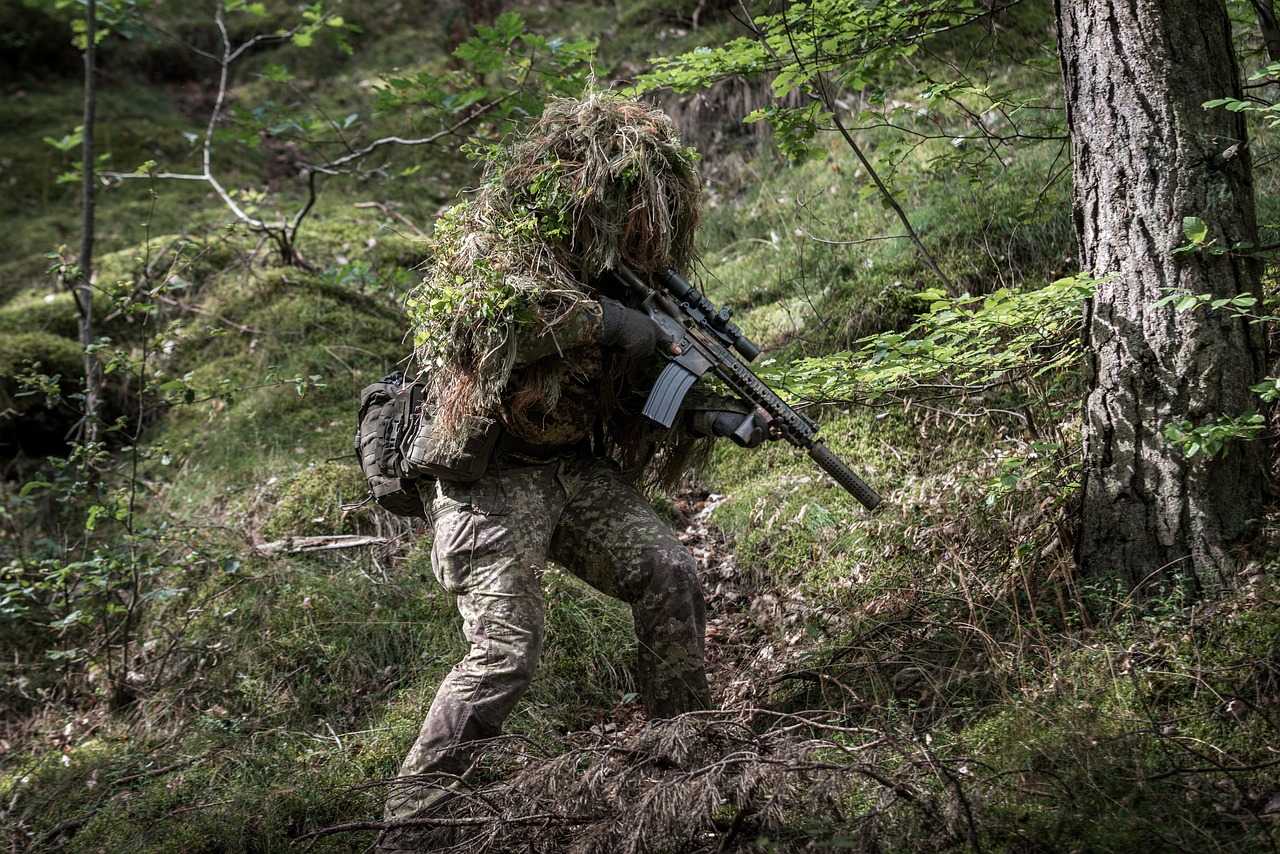
Training Methodologies
In the realm of military training, the methodologies employed are as diverse as the challenges faced on the battlefield. Continuous learning is not merely a concept; it’s a necessity that shapes the very fabric of operational readiness. To ensure that military personnel are equipped with the skills and knowledge necessary to adapt to ever-changing environments, a variety of training methodologies are utilized. These approaches not only enhance learning outcomes but also foster a culture of innovation and adaptability.
One of the most effective methodologies is simulation-based training. This approach immerses soldiers in realistic scenarios that mimic real-world challenges, allowing them to practice decision-making and tactical skills in a controlled environment. Imagine being able to face a high-pressure situation without the actual risks involved—this is the essence of simulation training. It’s like a flight simulator for pilots, where they can experience turbulence and emergency landings without ever leaving the ground. The value of such training cannot be overstated, as it prepares military personnel to think critically and act decisively when it matters most.
Simulation-based training is not just about playing out scenarios; it’s about creating a safe space for learning and improvement. By engaging in these simulations, soldiers can encounter various outcomes based on their decisions, allowing them to learn from mistakes without real-world consequences. This iterative process is crucial for developing the mental agility required on the battlefield. For example, during a simulation exercise, a soldier might need to choose between two tactical approaches. The immediate feedback from the simulation provides insights into the effectiveness of their choice, enabling them to refine their strategies.
As technology continues to advance, virtual reality (VR) applications are becoming a game-changer in military training. These immersive experiences allow soldiers to engage with their environment in a way that traditional training cannot replicate. Imagine donning a VR headset and finding yourself in a war zone, where every sound and sight feels incredibly real. This level of immersion enhances learning outcomes by engaging multiple senses, which is proven to boost retention and understanding. VR training can simulate various scenarios, from urban combat to disaster response, providing soldiers with invaluable experience before they ever step foot in a real conflict.
Another essential component of effective training methodologies is the implementation of robust feedback mechanisms. Constructive feedback is the cornerstone of continuous improvement. In military training, this means that after each exercise, personnel receive detailed evaluations of their performance. This feedback loop helps them identify areas for improvement and refine their skills. It’s similar to how a coach provides guidance to an athlete after a game—pointing out strengths while also highlighting areas that need work. This ongoing dialogue between trainers and trainees fosters a culture of growth and development, ensuring that soldiers are always learning and evolving.
In addition to formal training methodologies, peer learning and collaboration play a significant role in military education. Soldiers learn best when they can share experiences and knowledge with one another. This collaborative approach not only enhances individual skills but also builds unit cohesion. Think of it as a team of musicians rehearsing together; each member brings their unique talents, and through collaboration, they create a harmonious performance. In the military, this synergy translates to improved operational effectiveness, as soldiers become more adept at working together under pressure.
In summary, the training methodologies employed in military settings are vital for fostering continuous learning and operational readiness. From simulation-based training to the integration of cutting-edge technologies like VR, these methodologies ensure that military personnel are well-prepared for the complexities of modern warfare. By embracing these diverse approaches, the military can cultivate a culture of adaptability and resilience, essential traits for success in an unpredictable world.
- What is simulation-based training?
Simulation-based training involves creating realistic scenarios that allow military personnel to practice their skills in a safe environment, enhancing decision-making and tactical abilities. - How does virtual reality enhance military training?
Virtual reality provides immersive experiences that engage multiple senses, improving retention and understanding of complex scenarios faced on the battlefield. - Why is feedback important in military training?
Feedback helps soldiers identify strengths and weaknesses, fostering continuous improvement and ensuring they are always learning and evolving. - What role does peer learning play in military training?
Peer learning promotes teamwork and knowledge sharing, enhancing operational effectiveness and building strong unit cohesion.

Simulation-Based Training
Simulation-based training is a game changer in the realm of military education. Imagine stepping into a virtual battlefield where every decision you make has real consequences. This immersive experience not only enhances decision-making skills but also prepares military personnel for the unpredictable nature of combat. By engaging in realistic scenarios, soldiers can practice their responses to various situations without the inherent risks of actual combat. This controlled environment allows for a unique blend of learning and practice, making the training both effective and safe.
One of the standout features of simulation-based training is its ability to replicate high-stress situations. Think of it like a flight simulator for pilots; just as aviators refine their skills in a virtual cockpit, military personnel can hone their tactical abilities in simulated combat scenarios. These simulations can range from small unit tactics to large-scale operations, providing a comprehensive learning experience. The technology behind these simulations has evolved dramatically, enabling trainers to create highly sophisticated scenarios that mimic real-world challenges.
Moreover, simulations are not just about individual skills; they also foster teamwork and communication among units. In a combat situation, coordination and collaboration are crucial. By participating in simulation-based training, soldiers learn to work together effectively, building trust and cohesion within their teams. This collaborative aspect is vital, as it reflects the reality of military operations where success often hinges on how well units can function as a cohesive unit.
To illustrate the effectiveness of simulation-based training, consider the following table that highlights various aspects of this training methodology:
| Aspect | Benefits |
|---|---|
| Realism | Provides a true-to-life experience that prepares soldiers for actual scenarios. |
| Safety | Allows for practice without the risk of injury or loss of life. |
| Feedback | Immediate feedback helps soldiers learn from their mistakes in real-time. |
| Cost-Effectiveness | Reduces the costs associated with live training exercises. |
In summary, simulation-based training stands at the forefront of military education, providing invaluable experiences that enhance both individual and team performance. As technology continues to advance, the potential for even more immersive and effective simulations grows, ensuring that military personnel are always prepared for the challenges they may face on the battlefield.
- What is simulation-based training? Simulation-based training involves using virtual environments to replicate real-world scenarios for military personnel to practice their skills.
- How does simulation-based training improve decision-making? It allows soldiers to experience high-pressure situations in a controlled setting, enhancing their ability to make quick and effective decisions.
- Is simulation-based training safe? Yes, it provides a safe environment for training without the risks associated with live exercises.
- Can simulation training foster teamwork? Absolutely! It encourages collaboration and communication among team members, which is crucial for operational success.
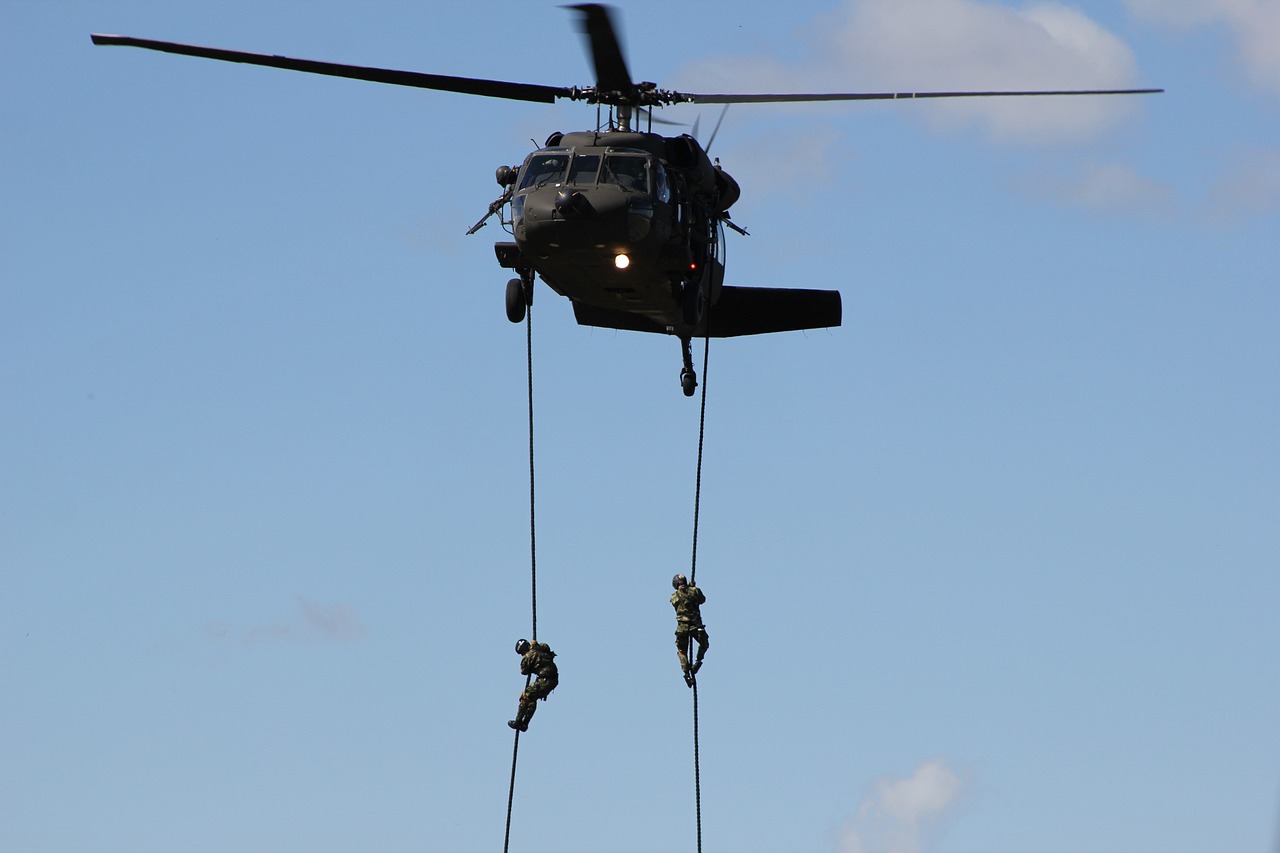
Virtual Reality Applications
Virtual reality (VR) applications are not just a trend; they are revolutionizing the way military training is conducted. Imagine being able to step into a fully immersive environment where every sound, sight, and sensation mimics real-life scenarios. This is what VR offers to military personnel, making training not only more engaging but also incredibly effective. By utilizing VR technology, soldiers can experience complex situations that they might face on the battlefield without the associated risks. It's like a high-stakes video game, but with real-world implications.
The advantages of VR in military training are manifold. For starters, it allows for repetitive practice in a safe environment. Soldiers can undergo various scenarios repeatedly until they master the skills required to respond effectively. This is particularly beneficial for high-pressure situations where every second counts. Additionally, VR can simulate environments that are difficult or impossible to recreate in real life, such as urban warfare or natural disaster response. This versatility helps soldiers prepare for a wide range of operational environments.
Moreover, VR applications facilitate immediate feedback. After a training session, instructors can review the soldier's performance, highlighting areas of strength and pinpointing aspects that need improvement. This feedback loop is crucial for continuous learning, as it allows individuals to adjust their strategies and approaches based on real-time data. Imagine a pilot practicing maneuvers in a simulator, receiving instant critiques, and then flying a mission with enhanced confidence and skills.
As we look at the broader implications, the integration of VR into military training can significantly enhance team cohesion and communication skills. Soldiers can engage in team-based scenarios where they must collaborate to achieve objectives. This not only fosters a sense of camaraderie but also sharpens their ability to work under pressure, making them more effective in real-world operations.
In summary, the application of virtual reality in military training is a game-changer. It provides a safe, controlled environment for soldiers to hone their skills, receive immediate feedback, and build effective teamwork. As technology continues to advance, it will be fascinating to see how VR evolves and further integrates into military training programs, ultimately enhancing operational readiness and adaptability.
- What are the main benefits of using virtual reality in military training?
VR enhances engagement, allows for safe practice of complex scenarios, provides immediate feedback, and fosters teamwork.
- How does VR prepare soldiers for real-world challenges?
By simulating realistic scenarios, soldiers can practice decision-making and tactical skills in a risk-free environment.
- Can VR training be integrated with other training methodologies?
Absolutely! VR can complement traditional training methods, such as classroom instruction and hands-on exercises.
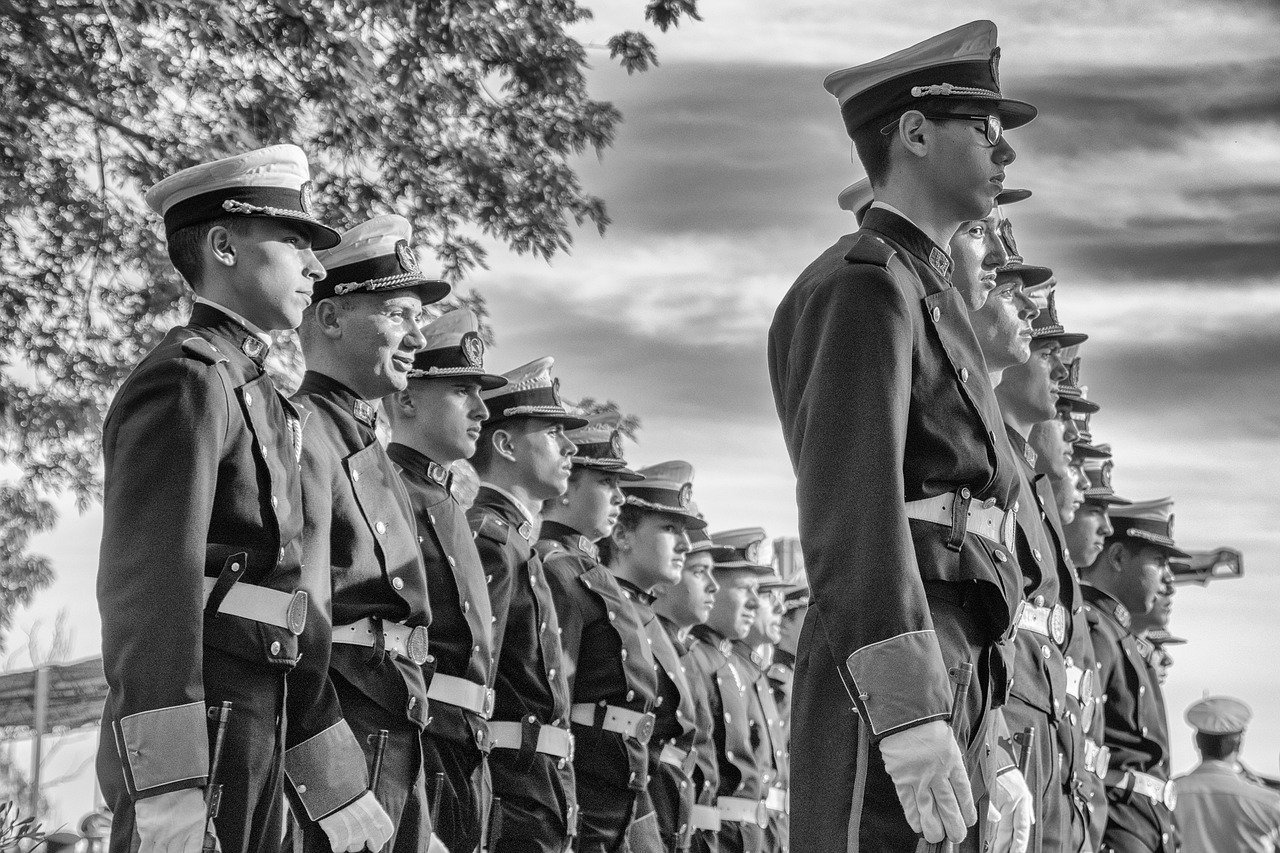
Feedback Mechanisms
In the realm of military training, effective feedback mechanisms serve as the backbone for continuous learning and improvement. Imagine being on a battlefield where every decision counts, and the stakes are incredibly high. In such scenarios, having a system that provides timely and constructive feedback can make the difference between success and failure. Feedback is not just about pointing out mistakes; it’s about fostering a culture of growth, where military personnel can learn from their experiences and refine their skills.
Constructive feedback helps individuals identify their strengths and weaknesses, creating a roadmap for personal and professional development. It allows soldiers to understand what they did well and where they can improve, thus enhancing their operational readiness. For instance, after a training exercise, leaders can conduct debriefings where they discuss performance metrics, analyze decision-making processes, and highlight areas that require further training. This reflective practice not only solidifies learning but also encourages a mindset of continuous improvement.
Moreover, feedback mechanisms can take various forms, including:
- Peer Reviews: Colleagues can provide insights based on their observations, fostering a collaborative learning environment.
- After-Action Reviews (AARs): These structured reviews help teams analyze what happened during a mission, discussing both successes and areas for improvement.
- Performance Metrics: Quantitative data can be used to assess skills and effectiveness, giving a clear picture of where improvements are needed.
Incorporating these feedback mechanisms into military training not only enhances individual performance but also strengthens unit cohesion. When soldiers feel supported and valued through constructive feedback, they are more likely to engage actively in their training, leading to a more effective and adaptable force. Ultimately, the goal is to create an environment where feedback is seen as a vital part of the learning process, helping everyone—from new recruits to seasoned veterans—achieve their full potential.
- What is the role of feedback in military training?
Feedback plays a crucial role in military training by helping personnel identify strengths and weaknesses, fostering continuous improvement, and enhancing overall operational readiness. - How can feedback mechanisms improve team cohesion?
When soldiers receive constructive feedback, it encourages open communication and collaboration, leading to stronger relationships and a more cohesive unit. - What types of feedback mechanisms are most effective?
Peer reviews, after-action reviews, and performance metrics are all effective methods for providing feedback in military training.

Peer Learning and Collaboration
In the military, where teamwork is not just encouraged but essential, peer learning and collaboration play a pivotal role in enhancing operational effectiveness. Imagine a tightly-knit unit, each member bringing their unique skills and experiences to the table. This collaborative environment fosters an atmosphere where individuals can learn from one another, share insights, and develop strategies that would be hard to achieve in isolation. The beauty of peer learning lies in its ability to create a rich tapestry of knowledge, where every thread contributes to the overall strength of the unit.
When military personnel engage in collaborative learning, they not only improve their individual skills but also strengthen their unit's cohesion. This is akin to a well-rehearsed orchestra where each musician plays their part harmoniously to create a beautiful symphony. In a military context, this means that soldiers are better prepared to respond to challenges on the battlefield, as they understand each other's strengths and weaknesses. The exchange of knowledge and skills can happen through various formats, such as joint exercises, workshops, or even informal discussions during downtime.
Moreover, peer learning encourages a culture of continuous improvement. When soldiers participate in group training sessions, they can provide and receive feedback in real-time. This feedback loop is crucial; it helps individuals identify areas where they can improve and also reinforces effective practices. For example, during a tactical exercise, one soldier might notice that another's approach to a problem is particularly effective. By sharing this observation, they can enhance the entire team's performance. This process is not only beneficial for skill enhancement but also for building trust and camaraderie among team members.
Additionally, the role of technology cannot be overlooked in facilitating peer learning. With the advent of digital platforms, military personnel can collaborate across distances, share resources, and engage in discussions that transcend geographical barriers. For instance, using secure online forums, soldiers can discuss strategies, share lessons learned from past missions, and even participate in virtual training sessions. This accessibility ensures that learning is not confined to physical locations and can happen anytime, anywhere.
To illustrate the impact of peer learning and collaboration, consider the following table that outlines some key benefits:
| Benefit | Description |
|---|---|
| Enhanced Skill Development | Soldiers learn from one another, improving their individual and collective skills. |
| Increased Unit Cohesion | Collaboration fosters trust and teamwork, essential for effective operations. |
| Real-Time Feedback | Immediate feedback helps identify strengths and areas for improvement. |
| Access to Diverse Perspectives | Engaging with peers allows soldiers to consider different viewpoints and strategies. |
In summary, peer learning and collaboration are not just beneficial; they are essential components of military training that significantly enhance operational readiness. By fostering an environment where soldiers can learn from each other, the military not only prepares its personnel for the challenges they will face but also builds a resilient and adaptable force. As we continue to navigate the complexities of modern warfare, embracing these collaborative practices will be key to success.
- What is peer learning in the military? Peer learning in the military refers to the practice of soldiers learning from one another through collaboration, sharing experiences, and providing feedback.
- How does peer learning improve military effectiveness? It enhances skills, fosters teamwork, and creates a culture of continuous improvement, which are all critical for operational success.
- What role does technology play in peer learning? Technology facilitates communication and collaboration, allowing soldiers to engage in learning opportunities regardless of their physical location.
- Can peer learning be integrated into traditional training methods? Absolutely! Peer learning can complement traditional training by providing additional perspectives and insights that enrich the learning experience.
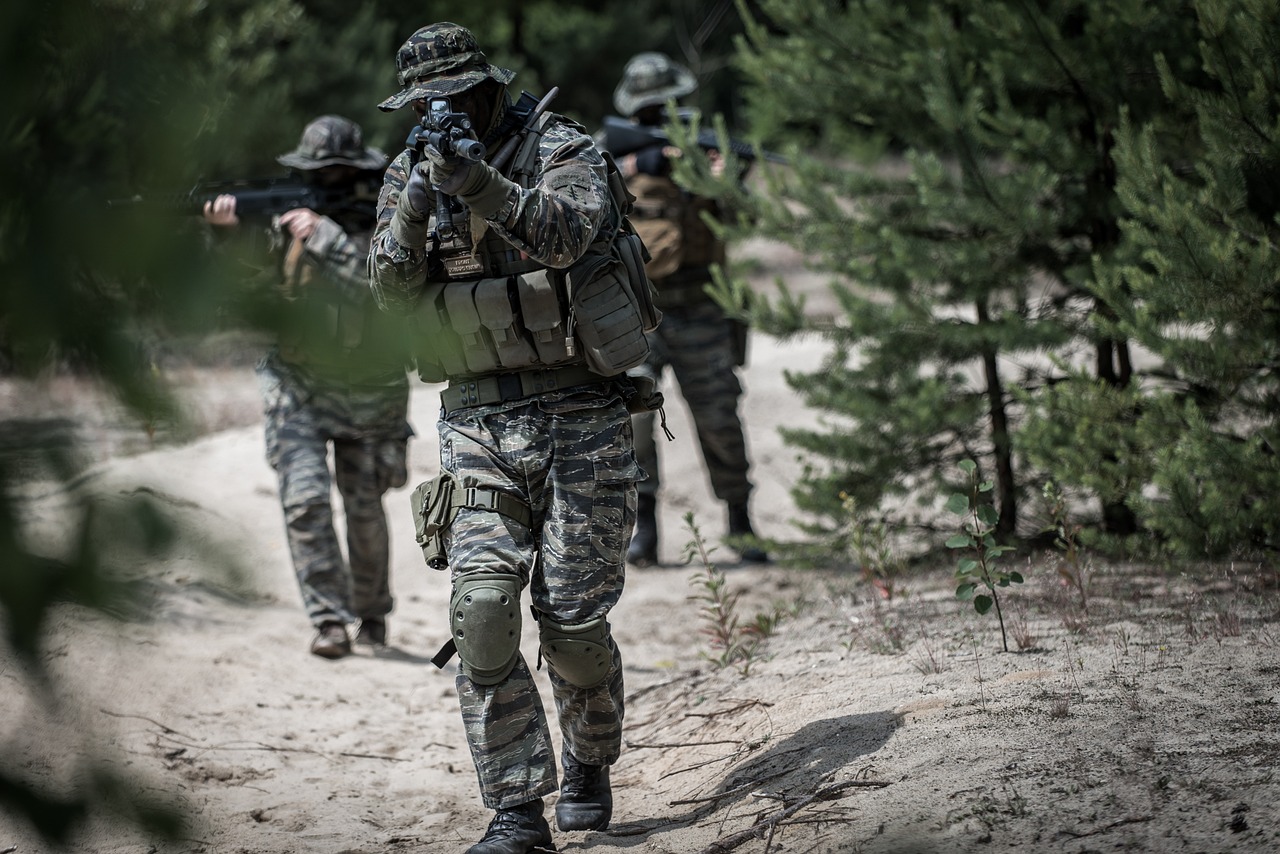
Adapting to Technological Advancements
In today's rapidly changing world, is not just an option for military personnel; it is a necessity. As new technologies emerge, the battlefield evolves, presenting both challenges and opportunities. Continuous learning enables military members to stay ahead of the curve, ensuring they are equipped with the latest skills and knowledge to effectively respond to modern threats. This adaptability is crucial in an era where technology can dictate the outcome of missions.
One of the most significant aspects of this adaptation is the incorporation of cutting-edge technologies into training programs. For instance, the rise of unmanned systems and drones has transformed reconnaissance and combat strategies. Military training must evolve to include comprehensive modules on operating these technologies. This not only enhances operational effectiveness but also prepares personnel for the complexities of modern warfare. By embracing continuous learning, military forces can ensure that their strategies are not outdated and that they are prepared for any scenario.
Moreover, the integration of new technologies like artificial intelligence (AI) into military operations demands a workforce that is knowledgeable and skilled in utilizing these advancements. Continuous learning programs should focus on educating personnel about AI applications in logistics, decision-making, and even predictive analytics. Understanding how to leverage AI can significantly enhance mission planning and execution. For example, AI can analyze vast amounts of data to provide actionable insights, making it essential for military personnel to be trained in these systems.
Another critical area where continuous learning plays a role is in cybersecurity. As military operations become increasingly digitized, the threats posed by cyber attacks are more prevalent than ever. Continuous education in cybersecurity practices is vital for safeguarding sensitive information and maintaining operational integrity. Training programs must regularly update personnel on the latest cyber threats and defensive strategies, ensuring they remain vigilant and prepared to counteract potential breaches.
To facilitate this ongoing education, military organizations can implement various training methodologies. For instance, online courses and webinars can provide flexible learning opportunities for personnel, allowing them to engage with new content at their own pace. Additionally, incorporating hands-on workshops and simulation exercises can provide practical experience with new technologies in a controlled environment, enhancing both understanding and application.
In summary, the ability to adapt to technological advancements is paramount for military personnel. Continuous learning is the key to ensuring that they are not only aware of the latest technologies but also proficient in utilizing them effectively. This commitment to education and training fosters a culture of innovation and resilience, which is essential for maintaining operational superiority in an ever-evolving battlefield.
- Why is continuous learning important in military training? Continuous learning ensures that military personnel are equipped with the latest skills and knowledge to tackle modern challenges effectively.
- How does technology impact military training? Technology introduces new tools and methodologies that can enhance training effectiveness and operational readiness.
- What role does cybersecurity play in military training? Cybersecurity training is crucial as military operations increasingly rely on digital systems, making personnel vulnerable to cyber threats.
- How can military personnel stay updated with new technologies? Through ongoing education programs, online courses, and hands-on workshops, military personnel can keep abreast of technological advancements.
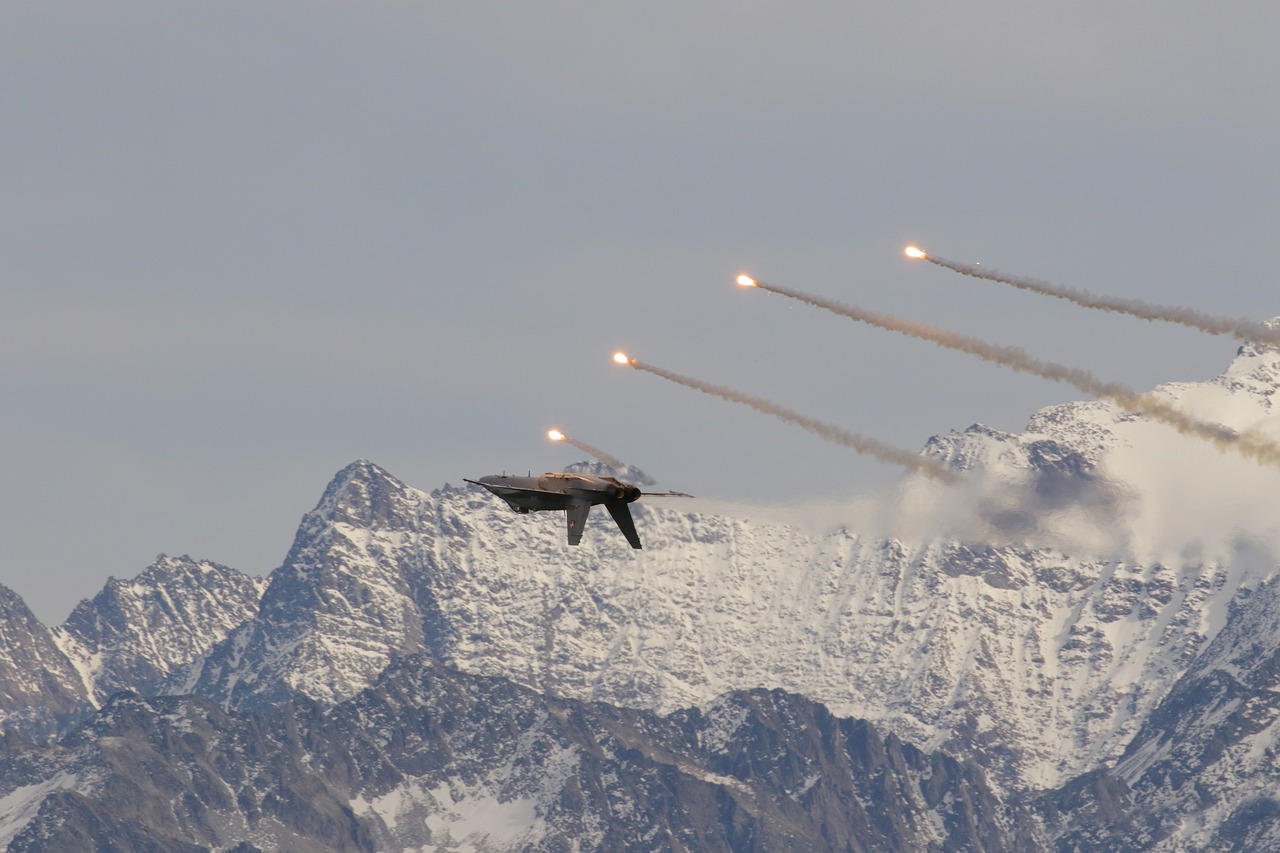
Cybersecurity Training
In today's digital age, where information is as valuable as gold, has become an indispensable part of military education. With the rise of sophisticated cyber threats, military personnel must be equipped with the skills to defend against potential attacks that could compromise national security. Think about it: just as soldiers need to be trained in physical combat, they also need to master the art of cyber warfare. This training not only involves understanding the basics of cybersecurity but also staying ahead of the curve in a constantly evolving digital landscape.
One of the critical aspects of cybersecurity training is its focus on proactive measures. Military personnel are taught to think like an attacker, which is crucial for anticipating and mitigating threats before they can cause harm. This approach is akin to chess, where each move must be calculated to outsmart the opponent. By understanding the tactics and techniques used by cyber adversaries, military members can develop robust defense strategies that protect sensitive information and critical infrastructure.
Moreover, cybersecurity training is not just a one-time event; it's an ongoing process. As technology advances, so do the methods employed by cybercriminals. This necessitates a commitment to continuous learning. For example, training programs may include:
- Regular workshops on the latest cybersecurity trends
- Simulated cyber attack scenarios to practice response strategies
- Collaboration with tech experts to enhance skill sets
These elements ensure that military personnel are not only prepared for current threats but are also adaptable to future challenges. Additionally, the incorporation of real-world scenarios into training helps to solidify learning. By participating in realistic simulations, soldiers can experience the pressures of a cyber crisis without the real-world consequences, allowing them to build confidence and refine their skills.
Furthermore, as the military integrates advanced technologies such as artificial intelligence and machine learning into its operations, the need for specialized cybersecurity training becomes even more pronounced. Understanding how these technologies work and how they can be exploited is critical for maintaining operational security. In essence, cybersecurity training is not merely an add-on; it is a fundamental component of military readiness in the digital age.
Q1: Why is cybersecurity training essential for military personnel?
A1: Cybersecurity training is crucial because it equips military personnel with the skills needed to defend against cyber threats that could compromise national security and military operations.
Q2: How often should cybersecurity training be conducted?
A2: Cybersecurity training should be an ongoing process, with regular updates and training sessions to keep personnel informed about the latest threats and defense strategies.
Q3: What are some common topics covered in cybersecurity training?
A3: Common topics include threat assessment, incident response, secure coding practices, and understanding emerging technologies like artificial intelligence.
Q4: How does simulation-based training enhance cybersecurity education?
A4: Simulation-based training provides a safe environment for military personnel to practice their skills in realistic scenarios, allowing them to develop confidence and improve their response strategies.

Integrating Artificial Intelligence
In today’s rapidly evolving battlefield, the integration of Artificial Intelligence (AI) is not just a trend; it’s a necessity. As military operations become increasingly complex, AI offers innovative solutions that enhance decision-making, improve operational efficiency, and bolster strategic planning. But what does this really mean for military personnel? Imagine having a highly sophisticated assistant that can analyze vast amounts of data in seconds, providing insights that would take humans hours or even days to uncover. That’s the power of AI in military training.
One of the most significant advantages of integrating AI into military training is its ability to process and analyze data in real time. For example, AI can monitor training exercises, evaluate performance metrics, and identify patterns that may not be immediately obvious to human observers. This capability allows military leaders to make informed decisions based on comprehensive data analysis, ultimately leading to more effective training outcomes. The question arises: how can military personnel leverage AI to enhance their skills and readiness?
Moreover, AI technologies can be utilized to create adaptive training programs tailored to individual needs. By analyzing the strengths and weaknesses of each soldier, AI can recommend specific training modules or simulations that focus on areas requiring improvement. This personalized approach ensures that every service member receives the training they need to succeed, fostering a culture of continuous learning and development.
Additionally, AI can play a crucial role in predictive analytics, helping military personnel anticipate and prepare for future challenges. For instance, by analyzing historical data and current trends, AI systems can forecast potential threats and suggest strategic responses. This proactive approach not only enhances operational readiness but also instills confidence in military personnel, knowing they are equipped with the knowledge and skills to face any situation.
However, the integration of AI into military training is not without its challenges. There is a pressing need for ongoing education to ensure that personnel understand how to effectively utilize these technologies. Training programs must evolve to incorporate AI literacy, ensuring that soldiers are not only users of technology but also informed decision-makers who can critically assess AI recommendations.
In conclusion, the integration of artificial intelligence into military training represents a transformative shift that can significantly enhance operational effectiveness. By embracing AI, military personnel can improve their decision-making capabilities, tailor their training experiences, and prepare for the complexities of modern warfare. As we look to the future, it is imperative that continuous learning remains at the forefront of military training, empowering soldiers to adapt and thrive in an ever-changing landscape.
- What is the role of AI in military training?
AI enhances military training by providing data analysis, personalized training programs, and predictive analytics to improve decision-making and operational readiness. - How can AI improve decision-making in the military?
AI can process large amounts of data quickly, allowing military leaders to make informed decisions based on comprehensive analyses rather than intuition alone. - What are the challenges of integrating AI into military training?
Challenges include the need for ongoing education to ensure personnel can effectively use AI technologies and the potential for over-reliance on automated systems. - How does AI contribute to personalized training?
AI analyzes individual performance data to recommend specific training modules that address each soldier's unique strengths and weaknesses.

Conclusion: The Future of Military Training
In conclusion, continuous learning is not just a buzzword; it is a fundamental pillar for the future of military training. As we navigate through an increasingly complex and unpredictable battlefield environment, the ability to adapt and evolve is more crucial than ever. Continuous learning ensures that military personnel are not only equipped with the latest skills but are also prepared to tackle unforeseen challenges with confidence and agility. The integration of advanced training methodologies, such as simulation-based training and virtual reality applications, allows soldiers to immerse themselves in realistic scenarios, honing their decision-making skills and enhancing their operational readiness.
Moreover, the importance of peer learning and collaboration cannot be overstated. In a military context, where teamwork is essential for success, fostering an environment that encourages knowledge sharing and mutual support is vital. This collaborative approach not only strengthens unit cohesion but also cultivates a culture of continuous improvement, where every individual is committed to personal and collective growth.
As we look to the future, it is imperative that military training programs remain flexible and adaptable, incorporating emerging technologies and methodologies. The rise of cybersecurity threats and the integration of artificial intelligence into military operations highlight the necessity for ongoing education. Military personnel must stay abreast of these developments to ensure they are not only reactive but also proactive in their strategies and operations.
Ultimately, the future of military training hinges on a commitment to lifelong learning. By embracing a culture of continuous education, the military can ensure that its personnel are not only prepared for the challenges of today but are also equipped to face the uncertainties of tomorrow. The battlefield may change, but the core principle remains: continuous learning is the key to sustained operational effectiveness and success.
- What is continuous learning in military training?
Continuous learning in military training refers to the ongoing process of acquiring new skills and knowledge, ensuring that personnel are prepared for evolving challenges. - How does simulation-based training benefit soldiers?
Simulation-based training provides realistic scenarios that enhance decision-making skills and prepare soldiers for real-world challenges in a controlled environment. - Why is peer learning important in the military?
Peer learning fosters teamwork and knowledge sharing, which are crucial for enhancing operational effectiveness and building strong unit cohesion. - What role does technology play in military training?
Technology, including virtual reality and artificial intelligence, is transforming military training by providing innovative methodologies that enhance learning outcomes and operational readiness.
Frequently Asked Questions
- Why is continuous learning important in military training?
Continuous learning is crucial in military training because it enhances the effectiveness of personnel by improving their skills, fostering innovation, and preparing them for a wide range of challenges. In an ever-evolving battlefield, staying updated with new tactics and technologies is essential for mission success.
- What are some effective training methodologies for continuous learning?
Various methodologies can enhance continuous learning in military training, including simulation-based training, workshops, and online courses. These approaches help personnel practice real-world scenarios, develop critical thinking, and adapt to new situations effectively.
- How does simulation-based training benefit military personnel?
Simulation-based training allows military personnel to engage in realistic scenarios, enhancing their decision-making skills and operational readiness. By practicing in a controlled environment, they can experience high-pressure situations without the risks associated with real combat.
- What role does virtual reality play in military training?
Virtual reality (VR) applications are revolutionizing military training by providing immersive experiences that mimic real-life situations. This technology enhances learning outcomes and prepares soldiers for complex scenarios, making them more adaptable and effective on the battlefield.
- How important is feedback in the continuous learning process?
Effective feedback mechanisms are vital for continuous learning as they help military personnel identify areas for improvement. Constructive feedback enables them to refine their skills, ensuring they are always evolving and enhancing their operational capabilities.
- What is the significance of peer learning in military training?
Peer learning fosters teamwork and knowledge sharing among military personnel. By collaborating and learning from one another, they build strong unit cohesion and enhance operational effectiveness, making the entire team more capable in various situations.
- How does continuous learning help in adapting to technological advancements?
As technology advances, continuous learning becomes essential for military personnel to stay updated. Training programs must incorporate new technologies and methodologies to ensure that soldiers are equipped to handle modern challenges effectively.
- Why is cybersecurity training increasingly vital for military personnel?
With the rise of cyber threats, cybersecurity training is crucial for military personnel. Continuous education in this area ensures they are equipped to handle emerging digital challenges, protecting sensitive information and maintaining operational security.
- How is artificial intelligence changing military operations?
Artificial intelligence is transforming military operations by providing advanced tools for analysis, decision-making, and strategy development. Continuous learning is essential for understanding and effectively integrating AI technologies into military strategies, ensuring personnel can leverage these advancements.
- What does the future hold for military training regarding continuous learning?
The future of military training will increasingly rely on continuous learning to maintain operational effectiveness in a dynamic environment. As challenges evolve, ongoing education will be vital to ensure that military personnel are prepared and capable of adapting to new situations.








